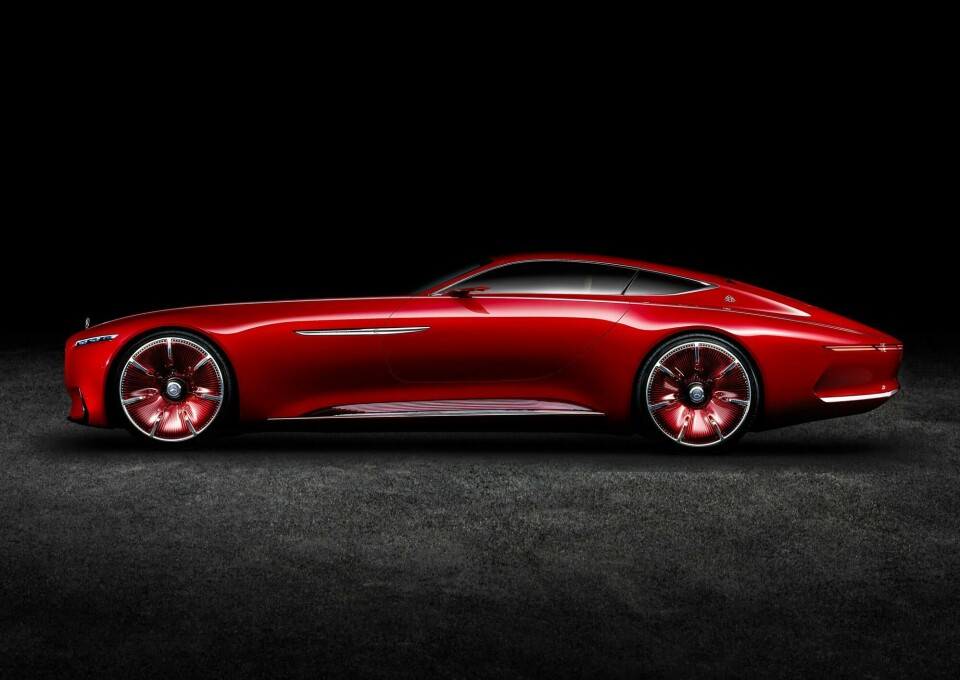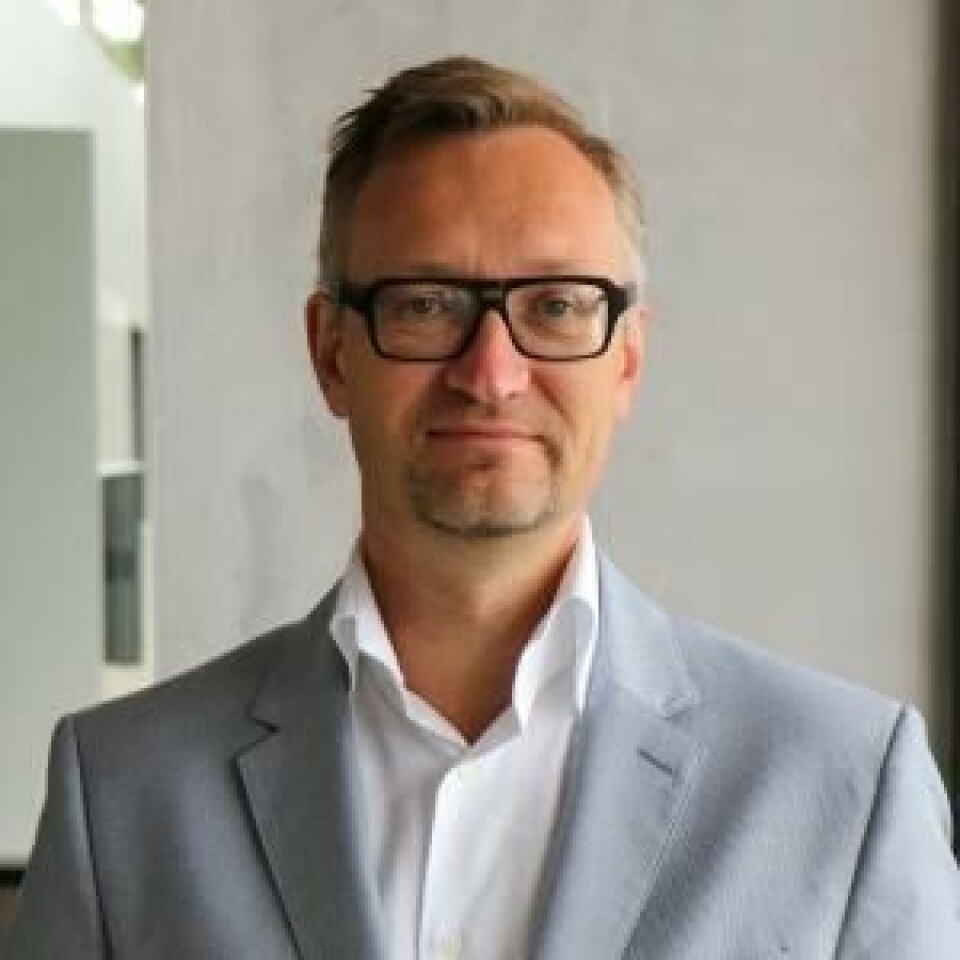
Interview: Stefan Lamm, director global advanced design, Mercedes-Benz
Car Design News sits down with Stefan Lamm, the new director of global advanced design at Mercedes-Benz to discuss early beginnings, showcars and his career highlights
Following a conversation on career aspirations with his parents as a 14-year-old boy, Stefan Lamm decided he would chase his dream of becoming a car designer. He religiously pored over German car magazines and spent hours staring out the window at his neighbour’s car – a new Mercedes W123, the classic saloon of the 70s.
Fast forward nearly 50 years, and Lamm has been appointed the director of global advanced design at Mercedes-Benz, having previously held positions at GM Europe, Opel, Ford and SEAT. Car Design News spoke to him about his new role and discussed the ins and outs of advanced design, from the use of state-of-the-art tools to consumer desirability.

Car Design News: What have been your career highlights to date?
Stefan Lamm: My first employer was Opel, where I worked for ten years. When I started I was designing small cars like the Corsa, which gave me the opportunity to move to Japan and work with Suzuki on small cars. It was my very first experience outside Europe and the US.
GM Europe also gave me the responsibility of a joint venture with the Korean car brand Daewoo, and after that I worked together with Martin Smith and Marc Adams on some show cars like the Opel Insignia Concept. Our vision was to make Opel more upscale and to bring in a new design language. Martin then moved to Ford Europe and asked me to follow him, where I took responsibility for exterior design.
In this role my team was responsible for the design of production cars like the Ford Ka, Fiesta, Focus, Kuga – a lot of cars that you still see on the road. And then, there was the financial crisis in 2008, and we had to develop a Ford design DNA for the global market. I was part of this team, and it was a very exciting journey.
CDN: How did you get from Ford to Mercedes?
SL: I had a job offer from Volkswagen Group to be the head of exterior design for SEAT in Spain, with the objective of accelerating the design language of the brand. However, soon after I started, I received a call from Gorden Wagener. He asked me to join the Mercedes-Benz design team and run the Carlsbad Advanced Design Studio, to create a new spirit there. I knew immediately that this was what I wanted to do, so I moved from Spain to California.
CDN: What was the transition like moving from mass production cars to the more luxurious side of vehicle design?
SL: It was a completely different world. After 20 years with volume brands like Opel, Ford and Seat, I was now responsible for creating products of a luxury brand – so I had to look at our products very differently. One of my first projects was the Vision Mercedes-Maybach 6 Coupé. I remember asking myself: “What can you do to make a difference at Mercedes-Benz?” I had to think big and think differently.
It was a real challenge to design the model and the 2017 Cabriolet, of which I am very proud. My next projects were the EQ Silver Arrow, the Vision One-Eleven and the key theme of the current SL roadster. I also had the opportunity to work with Gorden Wagener and Virgil Abloh on the Project Maybach, which was very exciting, as well as the Vision EQXX.
CDN: What differentiates the studios and world of advanced design from traditional design?
SL: Mercedes-Benz has so much potential to drive the future and together with my team, I am now in the position to navigate our advanced design into the future. That’s also the reason why it’s so important to have our international advanced design studios around the world. These studios are constantly sensing the vibes of global cultures, creativity and innovation. We want to create iconic designs.
I really enjoy working with these teams, engaging in dialogue with them, being encouraged and inspired by them. The dialogue and exchange with colleagues around the world is probably the best part of my job, apart from creating visions and iconic Mercedes-Benz products of the future.
CDN: Can you provide an outline of Mercedes-Benz advanced global design? What are the key facilities, capabilities and strengths?
SL: We have studios in only the most iconic locations around the world. One is in Germany at our headquarters, the others are on the Côte d’Azur in Nice, France; in the vibrant city of Shanghai, China; and in sunny Carlsbad, California, US. All of them have the independence to create their own visions and concepts within the Mercedes-Benz design philosophy of Sensual Purity.
CDN: Are there any fledgling advanced design tools/techniques that you are using that are particularly exciting and promising?
My team and I are always excited to create the next icon
SL: In addition to the traditional design process of clay modelling, we also work fully digitally, using state-of-the art tools such as 3D visualisation and virtual reality. All of them help to save us time and make the design process more efficient. Virtual reality also helps us to work together on the same project at the same time, regardless of our location.
CDN: What is the most significant challenge facing you and your team at the moment?
SL: I think the last 20-25 years has been a crucial period in design. Now, of course, electrification is playing a major role, and with that comes the evolution of vehicle architecture. We also have to meet the different needs of all our target customers and upcoming generations, whether they are in China, the US or in Europe. How do we do that? We at Mercedes-Benz want to build the most desirable cars in the world, and I personally think we are in a good position. So, the most difficult, but also the most exciting task will be to build on this leading position.
CDN: How much of advanced design revolves around feel and instinct, and how much is hard work and experience?
SL: When you talk about show or concept cars, the most important aspect is to have a clear vision of the story you want to tell with this show car. That’s the first thing you have to accomplish – storytelling. This is not hard work, this is the fun part, because it means being creative, starting with a pencil and a piece of white paper. In the case of the Vision One-Eleven, this meant not only looking back at the history of the original C 111, but also at the car’s innovative drive technology.
The Vision Mercedes-Maybach 6 was a different story – this show car was all about beauty. We wanted to return to the world of prestigious cars with rich history and represent Mercedes-Maybach at its best. We wanted to create an icon for the future – and I think we have achieved that. This show car is still touring the world and can be seen at many exhibitions. And then there was the EQXX, which we worked together with the advanced engineering team. We designed and built the most efficient car possible.
These are just three examples of great, fantastic cars and show cars that are completely different in their design and their storytelling. And there is more to come. My team and I are always excited to create the next icon.











